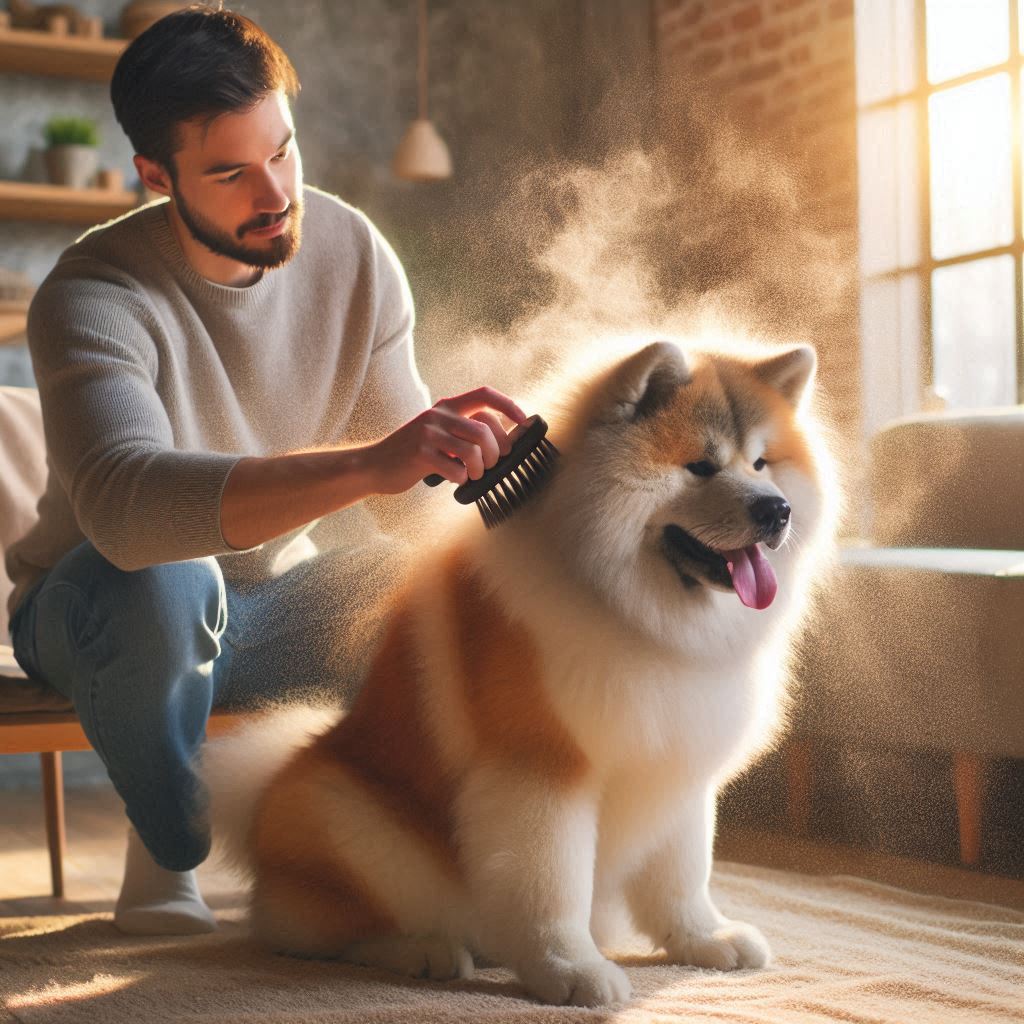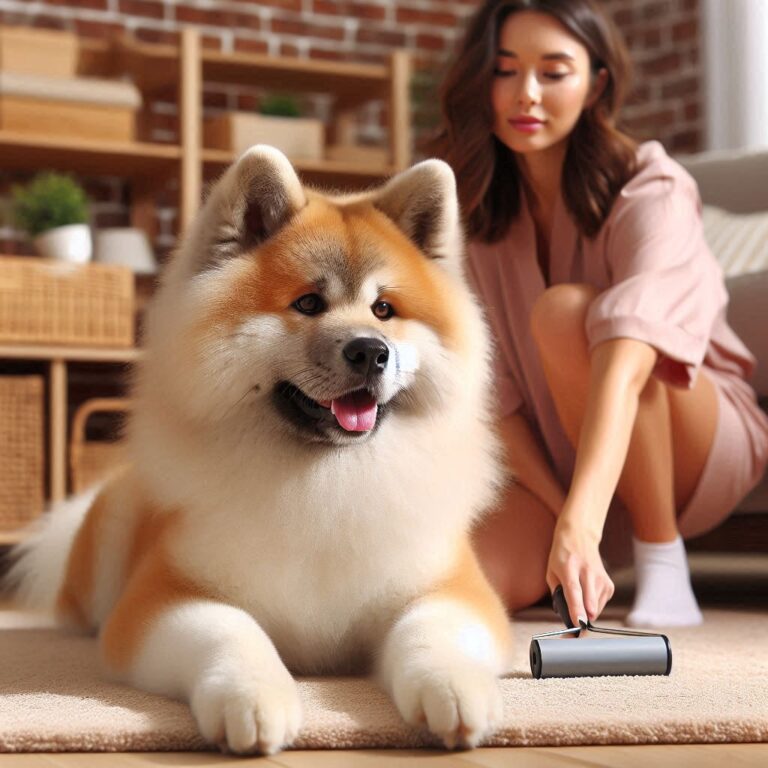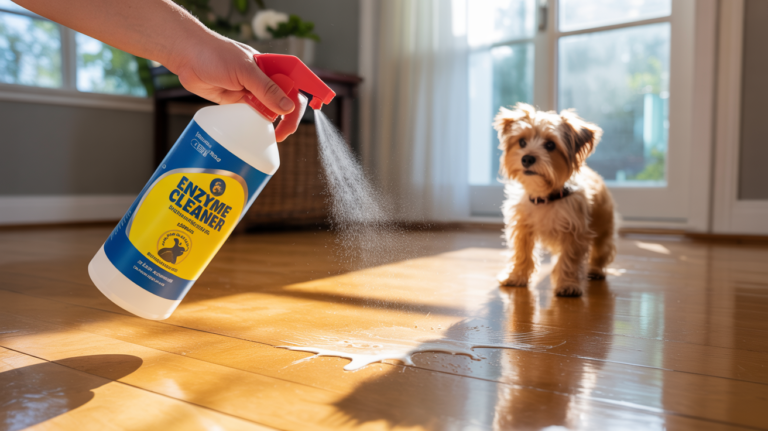This Is Why You Must NEVER Trim Your Akita’s Fur
Have you ever desired to give your Akita a beautiful trim to enhance their appeal? It’s normal to want your pet to look their best, but it’s important to consider if this could have any side effects. In this article, you’ll get insights on whether trimming your Akitas fur is a good idea and what you need to know to keep them healthy and comfortable. Let’s go right in

Should you Actually Trim your Akita’s Fur?
No, you shouldn’t trim Akitas fur. Akitas have fur, not hair, which differs in its growth cycles and structure. Fur undergoes a seasonal shedding process, commonly known as “blowing coat.” This shedding cycle occurs usually twice a year, during spring and fall. During these times, the undercoat sheds so much to accommodate new growth. This shedding process helps regulate the dog’s body temperature, removing old or damaged fur and making way for a new, healthier coat.
In contrast dogs with hair instead of fur, grow their hair continuously without distinct shedding cycles. Breeds with hair rather than fur are the ones who often require regular trimming to prevent matting and maintain coat health, but they do not undergo the same seasonal shedding as breeds with fur.
Akitas’ fur is characterized by two distinct layers:
- Topcoat (Guard Hair): This layer consists of longer, coarser hairs that provide protection against environmental elements such as sun, rain, and debris. The topcoat helps repel water and dirt and aids the dog’s insulation.
- Undercoat: Beneath the topcoat lies a dense layer of softer, shorter hairs known as the undercoat. The undercoat serves as insulation, trapping air close to the skin to regulate body temperature. It keeps the dog warm in colder temperatures and helps them stay cool in warmer weather.
Why Trimming Should Be Avoided
Trimming an Akita’s double coat is generally discouraged due to several important reasons:
- Disruption of Insulation: Trimming the coat can disrupt its insulating properties. By altering the coat’s length and density, trimming can tamper with the Akita’s ability to regulate its body temperature effectively. This will in turn lead to discomfort and potential health issues in extreme weather conditions.
- Impact on Shedding Patterns: The natural shedding process of the Akitas coat can be affected by trimming. Improper trimming techniques or timing can interfere with the natural shedding cycle, potentially causing the coat to grow back irregularly or more slowly. This disruption can lead to matting, increased grooming needs, and discomfort for the dog.
- Risk of Skin Irritation: Akitas have sensitive skin underneath their dense coat. Trimming with improper tools or techniques can cause skin irritation, abrasions, or even injuries. The double coat provides a protective layer for the skin, and disrupting this can expose the skin to potential irritants and environmental factors.
Proper Coat Maintenance
Instead of trimming, maintaining an Akitas coat should focus on regular grooming practices that respect the natural characteristics of the double coat:
- Brushing: Regular brushing helps remove loose hair, prevent matting, of the coat. For Akitas, especially during shedding seasons, more frequent brushing sessions may be necessary to manage shedding effectively.
- De-shedding: Using appropriate grooming tools such as undercoat rakes or shedding blades can help remove loose undercoat hair without damaging the topcoat. This helps maintain the coat’s health and preserves its insulating properties.
- Light Scissoring: Occasional light scissoring around the feet, hocks, and sanitary areas can help maintain cleanliness and neatness without compromising the overall structure of the coat.
Common Myths That Make People Trim an Akita’s Fur
There are some widely believed theories about trimming Akitas. Here, I refute them as one who has dealt with a lot of Akitas in the past:
- Trimming Reduces Shedding
Trimming an Akitas fur does not reduce shedding. Shedding is a natural process where the dog loses old or damaged fur to make way for new growth. Trimming might reduce the amount of fur that falls out around the house temporarily, but it doesn’t stop the shedding cycle. Regular brushing and grooming are more effective at managing shedding.
- Trimming Keeps the Dog Cooler in Summer
Contrary to popular belief, trimming an Akitas double coat does not keep the dog cooler in summer. The double coat acts as a natural insulator, protecting the dog from both cold and hot temperatures. The undercoat traps air close to the skin, providing insulation that helps keep the dog cool in hot weather. Trimming or shaving the coat can actually make the dog more susceptible to heatstroke and sunburn by removing this protective barrier.
- Trimming Prevents Matting
While trimming might temporarily reduce matting, it’s not a long-term solution and can lead to other issues. Regular brushing and proper grooming practices are the best ways to prevent matting. Trimming the fur can disrupt the natural shedding process, potentially leading to uneven regrowth and more severe matting in the future.
- Trimming is Easier Than Regular Grooming
Some owners might think trimming the coat is a quick fix that reduces the need for regular grooming. However, this approach can create more problems than it solves. Trimming can interfere with the coat’s growth and protective functions and lead to the need for more grooming in the long run.
- All Dogs Benefit from Trimming
While some dog breeds with continuously growing hair benefit from regular trimming, Akitas are not one of them. The grooming needs of an Akita are specific to their double coat structure, which requires different care compared to breeds with hair. Understanding the unique needs of an Akitas coat helps in providing the appropriate grooming routine that maintains their health and well-being.
Final Thoughts
Do not trim your Akita’s fur as you would be tampering with the delicate balance of its fur development and shedding cycle. The Akita sheds when it needs to and grows its fur when it has to. So, allow your Akita shed naturally and do not try to trim its fur.
- Best Dog Car Seat For French Bulldog - October 1, 2025
- How to Prevent Scratches on Hardwood Floors from Dogs - October 1, 2025
- How To Protect Hardwood Floors From Scratches - October 1, 2025





